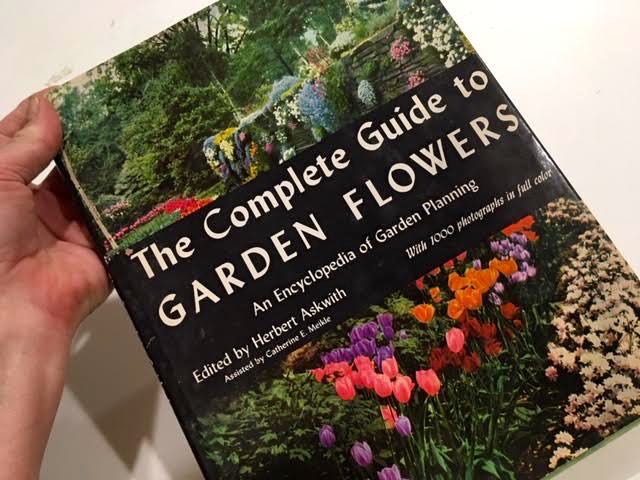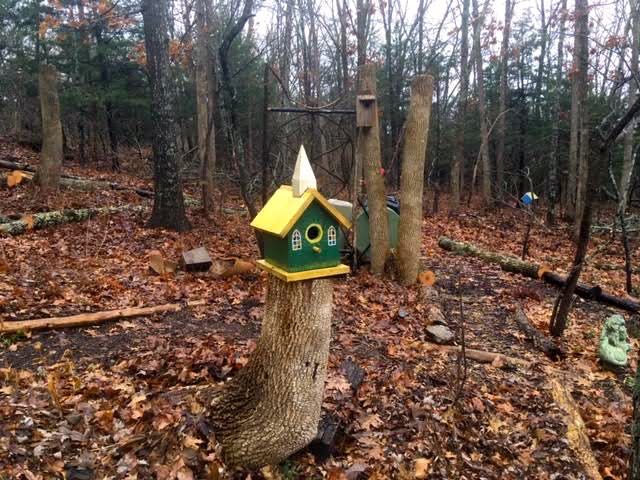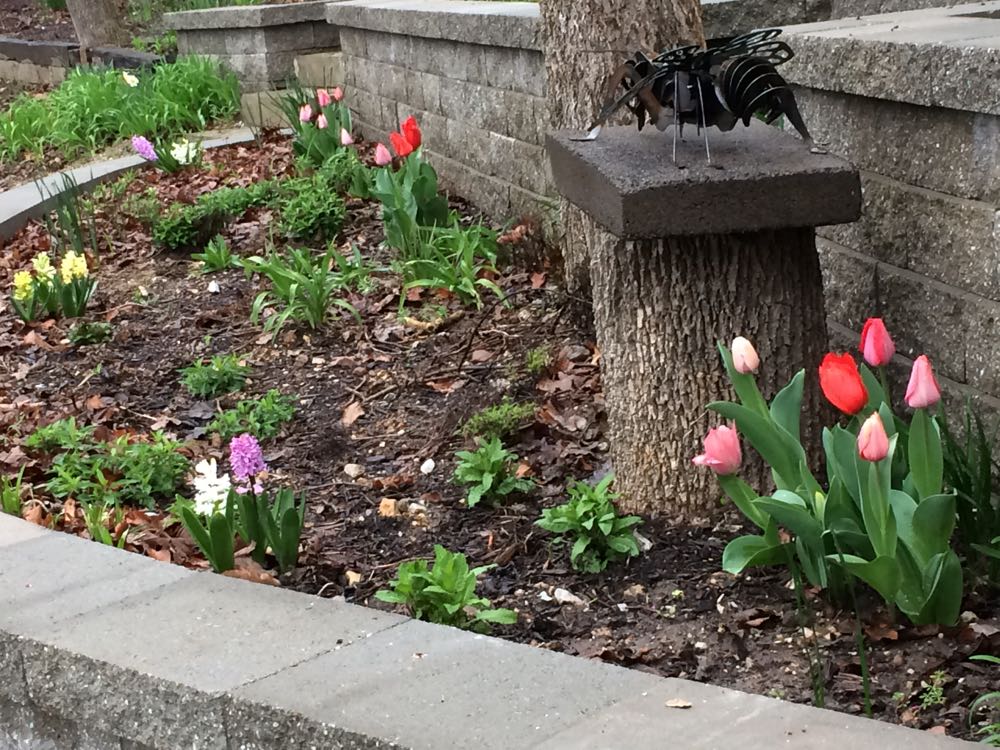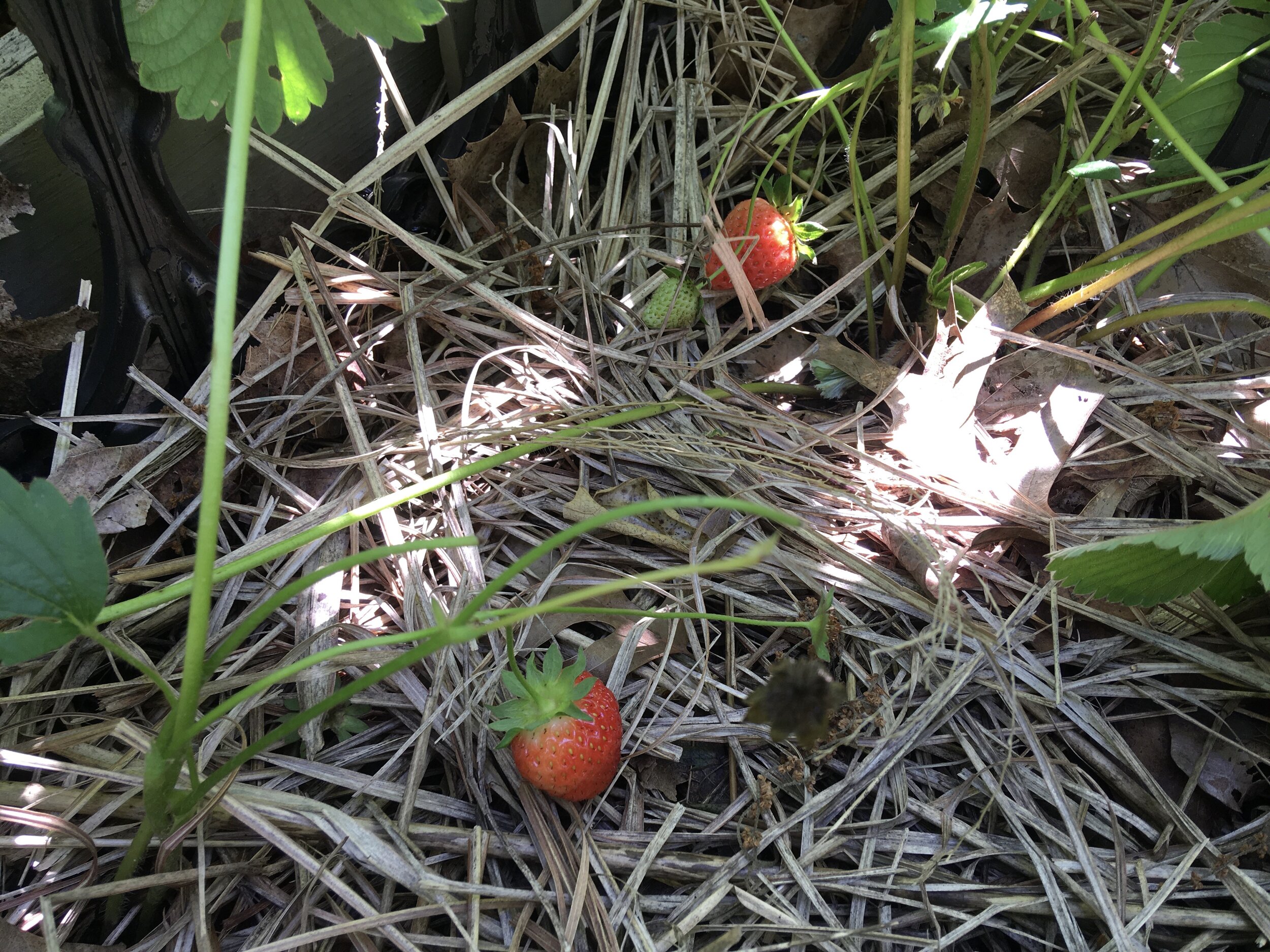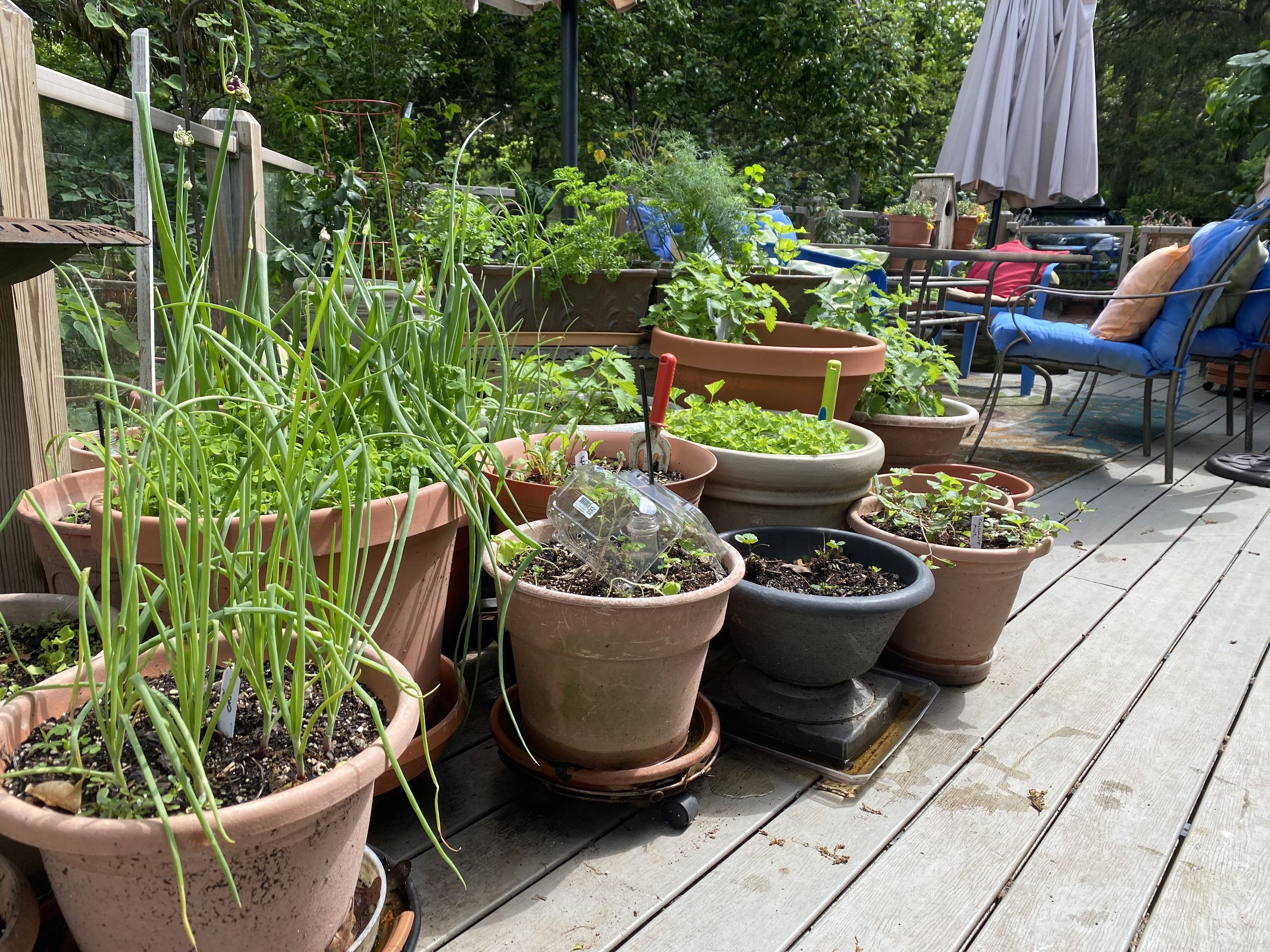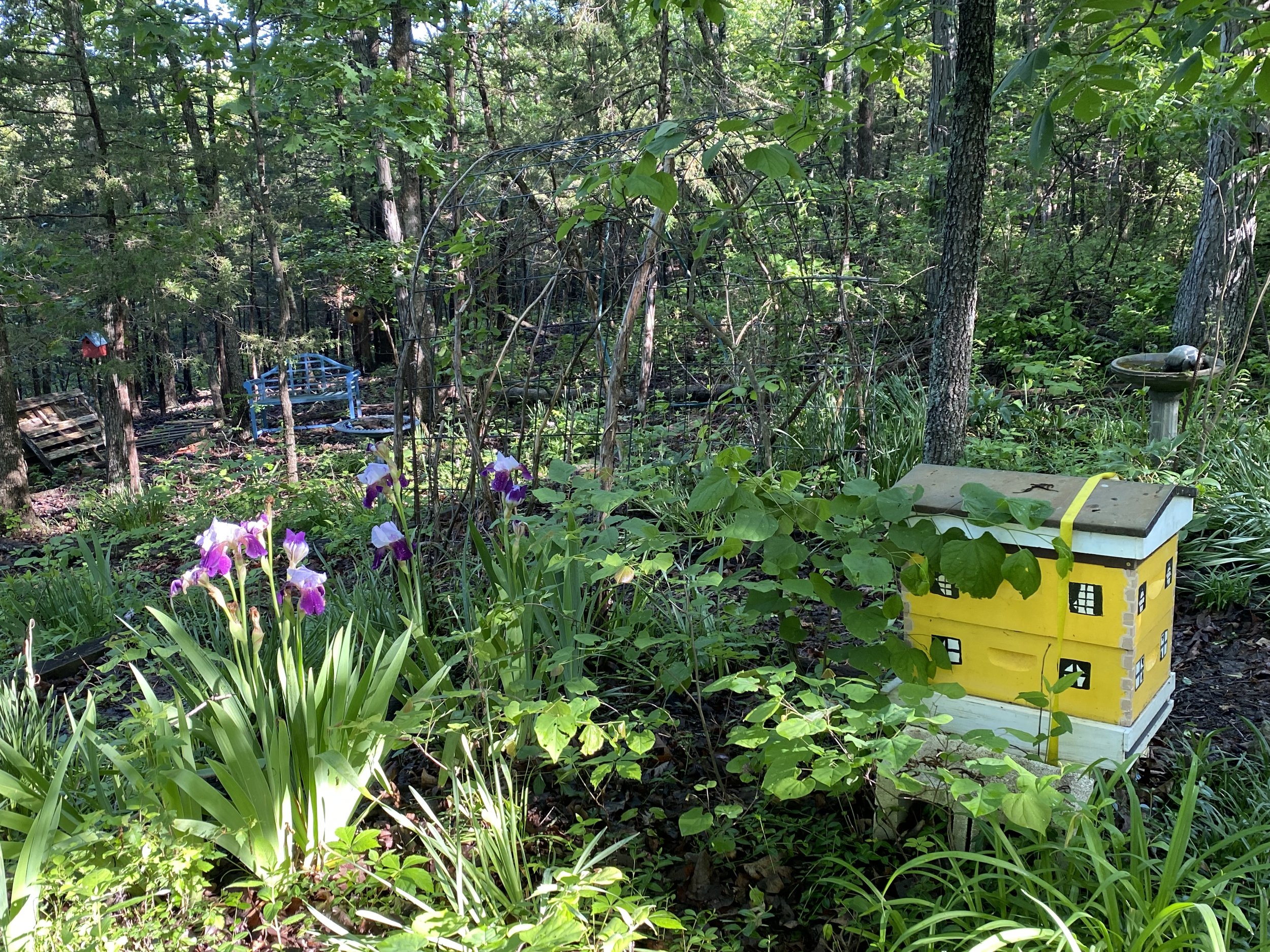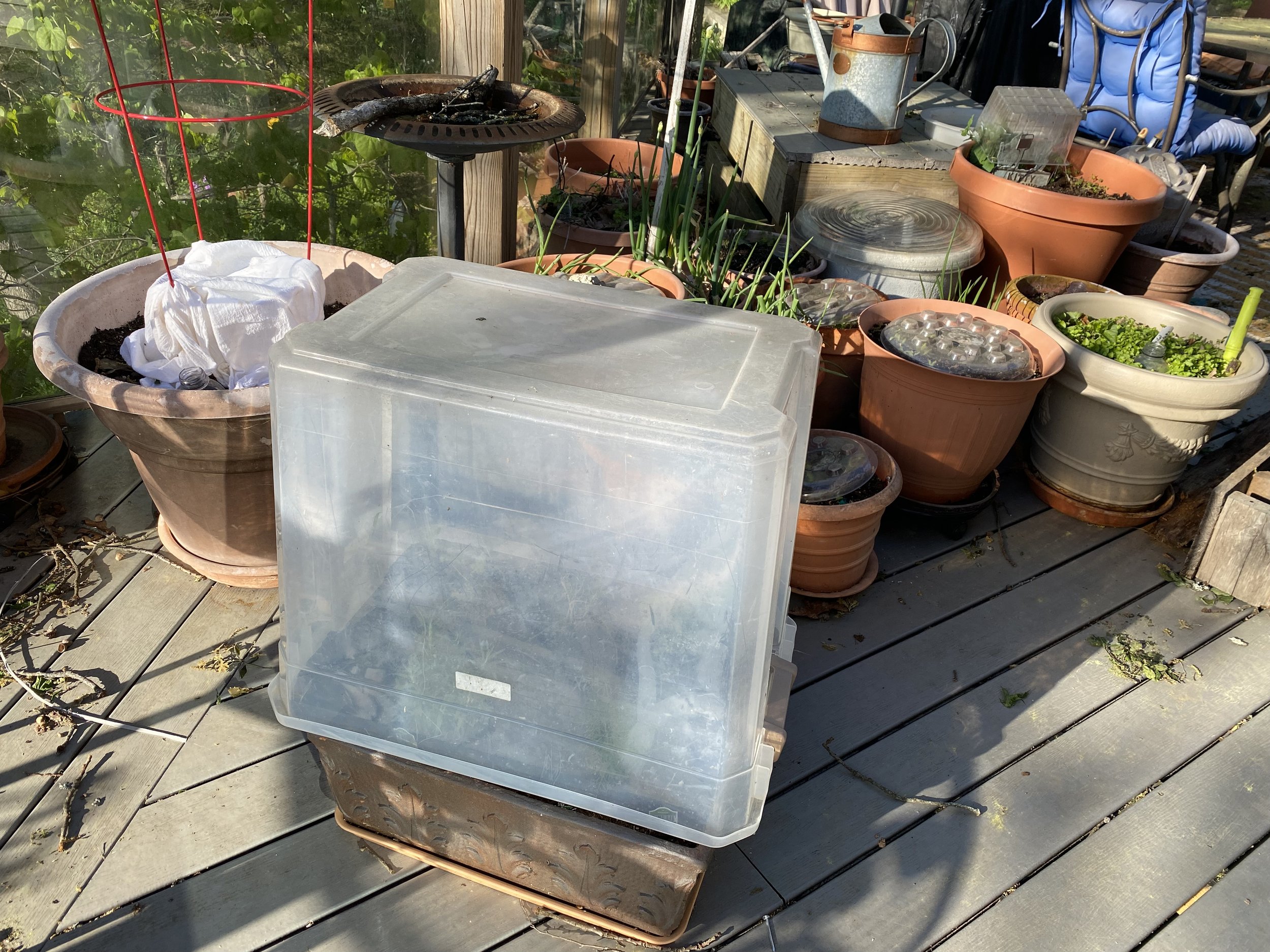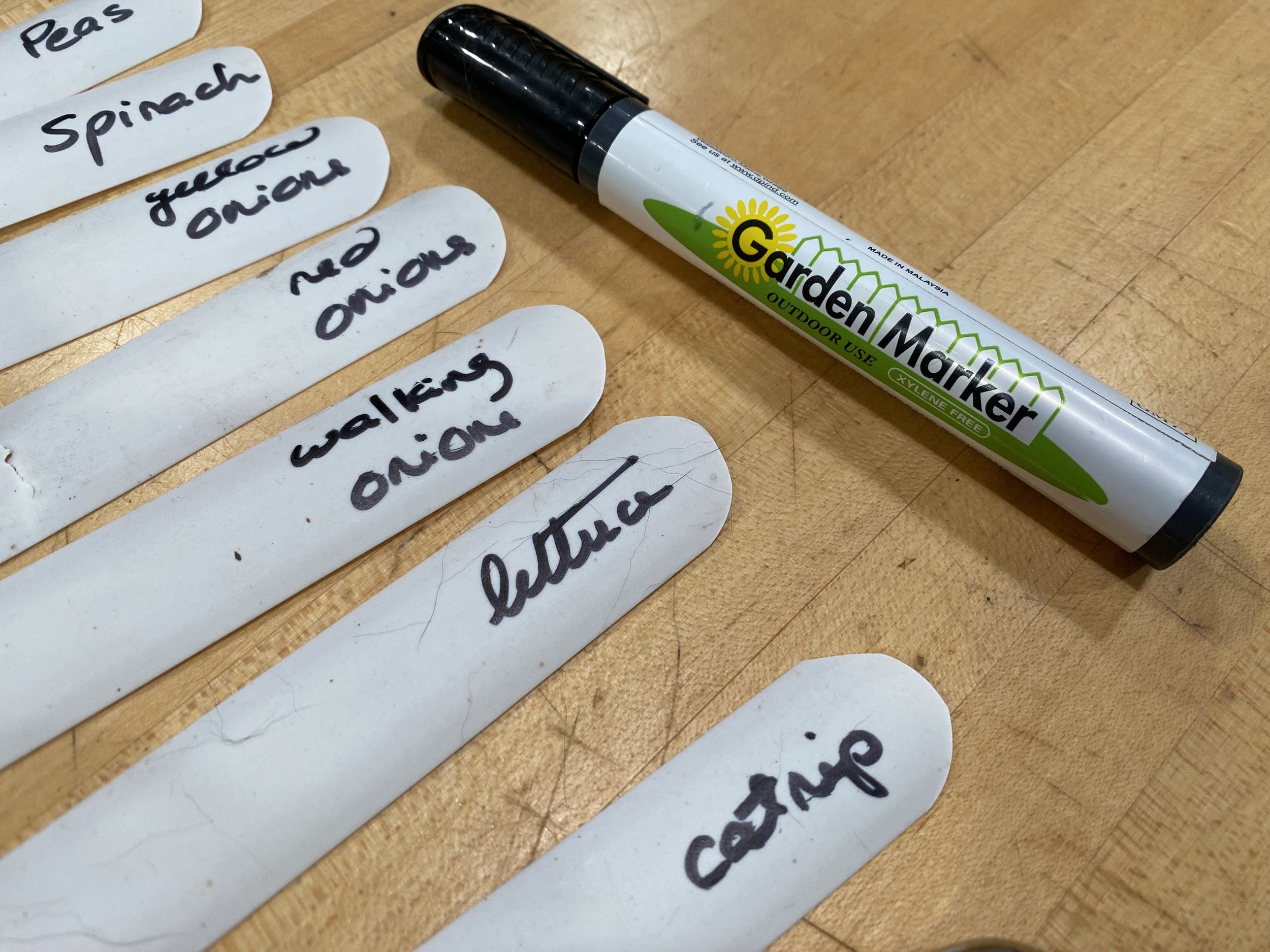Hardy Monkey Grass
/These three plants survived the polar vortex and are now in a pot in my kitchen. (Photo by Charlotte Ekker Wiggins)
Hardy Monkey Grass
I have a new contender for hardiest as well as most useful border garden plant, liriope muscari, also known as monkey grass.
Over the years, I have used this flowering perennial to line garden paths. Not only does it easily adjust to most soil conditions but it blooms August-September when little else in the garden is blooming. The light lavender flowers remind me of tiny grape hyacinth flowers, which explains the “muscari” in the plant name.
I found this latest bunch of monkey grass abandoned by the side of a road close to where I live. I recognized the tufts of thin leaves on top of the root clumps and happily brought them home to line my new garden paths.
A few weeks later, I started to find little plant groups pulled out of the ground and sitting in my paths. After a closer look, I found most of the plants trimmed to the ground by, I suspect, my resident deer. The ones pulled straight out of the ground had not established their roots yet so they could not fight off the hungry marauding visitors.
When the record-breaking cold polar vortex with snow hit mid-Missouri, it crossed my mind I should go out and check for any errant monkey grass pulled out of the garden. I waited until temperatures were in the 30s before making the rounds and found 3 groups of plants sitting in paths, their roots frozen but still pliable.
Frozen roots are thawing out and hopefully will recover. (Photo by Charlotte Ekker Wiggins)
Once inside, I gently poured room temperature water on the roots and placed them in a pot to thaw out.
According to the Missouri Botanical Garden, monkey grass is easily grown in average, medium moisture, well-drained soil in full sun to part shade. Tolerates a wide range of light conditions and soils. Will grow in close to full shade, but will produce more elongated foliage and spread more slowly. Also has good tolerance for heat, humidity and drought.
As you can see from the plants I brought inside, the leaves hold their color for a good part of fall and winter, finally dying back until new growth appears in spring. Some people cut it down. I have my own mowing team that trims the foliage back to root level so I don’t do much with the plants over winter.
Liriope muscari is also commonly called lilyturf or blue lily turf. It is a tufted, tuberous-rooted, grass-like perennial which typically grows 12-18" tall and features clumps of strap-like, arching, glossy, dark green leaves (to 1" wide). Clumps slowly expand by short stolons, but do not spread very fast. Lavender flowers give way to blackish berries which often persist into winter.
The genus name honors a Greek woodland nymph, Liriope, the mother of Narcissus.
Other common names are border grass and monkey grass.
Here is one of my garden paths bordered with monkey grass. The plants soften the paths and provide a nice green line during most of the growing season. When it blooms early fall, it also provides a source of pollen for my bees.
Monkey grass lines many of my garden paths. (Photo by Charlotte Ekker Wiggins)
As far as the three plants I brought inside, they get planted into a pot tomorrow to winter over in my living room until I can safely move them back outside.
As you plan your garden for later this year, add this plant to your list of border plants. They will be a nice addition to your garden and not require a lot of work, unless you find them out of the soil frozen mid-winter. Considering their history, I think pulling them through the rest of winter is the least I can do!
Charlotte















